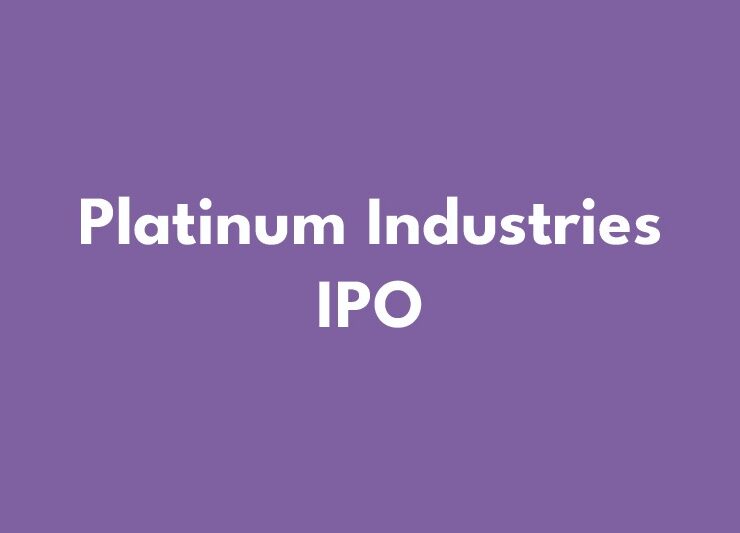What is an IPO and should you invest in them?

An initial public offering (IPO) is when a company raises equity capital from the public by issuing them shares of their company (i.e., giving them part ownership). These shares can be later bought or sold on a stock exchange.
- Prior IPO = Unlisted
- Post IPO = Listed (traded on stock exchanges)
When a company goes through an IPO, we often say it is “going public.” Basically, the idea of issuing shares is to raise money from the public against sharing the ownership of the company with them. In an IPO, the company offloads a certain percentage of its total shares to the public at a defined price.
The IPO process allows a company to raise money to fund operations, fuel growth, and pay down debt. An IPO also gives companies the opportunity to pay back its investors, who have the option of selling their private shares into the IPO.
IPO stock can be a very valuable investment sometimes, and other times investors can lose a lot of money.
Smart investing requires that you analyze the company and study the minutest of details before investing in an IPO.
The Benefits of Buying IPO Stock Buying
The right IPO investment can earn really good returns. IPO companies have the potential to deliver huge capital gains decades down the line. There are many examples to prove the point including Infosys, Titan, TCS, and HDFC Bank. To put it into perspective, ₹10,000 invested in Infosys IPO in 1993 would be worth over ₹3 crores today.
Not only that, but your investment provides capital to the economy, enabling companies that provide real goods and services to grow and expand. However, not all IPOs have a happy ending.
While the IPOs that jump in value on their listing and the initial few days get the most attention, those are not the norm. IPOs tend to be very volatile since investors aren’t quite sure how to correctly price a company with a very limited trading history and sometimes limited financial results.
So, the question is should you invest in an IPO?
The answer is – yes and no. It depends on which company, the reasons it is raising an IPO, and how is the IPO priced – is it cheap or expensive. Most importantly, where does this IPO investment fit into your investment goals?
Initial public offerings can gather a lot of buzzes, as we saw in 2020, but investors should think twice before blindly buying upcoming IPO stocks.
How to judge an IPO – Parameters & Analysis
IPOs can be a risky investment. For the individual investor, it is tough to predict which company’s shares will perform well on its listing day and in the near future since there is often little historical data with which to analyze the company. Also, most IPOs are companies going through a transitory growth period, and they are therefore subject to additional uncertainty regarding their future value.
Smart investing requires that you analyse the company and study the minutest of details before investing in an IPO. Here are some of the parameters you should evaluate before making your investment decision.
- Company background, Business Profile: Company background and business profile are important and need to be considered before investing in an IPO. These factors play a pivotal role in determining the profitability of a company. > Does the product or service that the company is offering have a good demand and scope of profit in the market? > What is the competitive landscape in the market for the business’s products or services? What is the company’s position in this landscape?
- The object of the issue: It is very important to know why the company requires money. Is the company offloading more equity than required? Where will be the issue proceeds utilized? Check the total cost required for the project and how will it be financed. Check the assumptions the promoters are making for the project’s success and do these assumptions or expectations sound feasible. It can be a new product launch because the company envisages its demand or expansion of current business because of the increased demand outlook.
- Valuations: The most important thing to look at it is how aggressively the IPO is priced with respect to listed companies in its segment. One way of checking the valuation is to look at the Price-Earnings (P/E) multiple. More details on the P/E ratio are given below under the financial parameters section. The more aggressively an IPO is priced, the lesser the chances of price appreciation.
It is often seen that when the markets are going through a bull run and there is a lot of optimism seen in the investors, generally all the IPOs when listed give good returns to the investors, despite being overvalued. Investors get carried away by greed and often forget to look at the quality of the IPO and its valuations before investing and get trapped. Investing in IPO should be seen as a long-term investment and not like a cash machine that can generate money with the press of a button. Remember, when making an investment valuation key. Therefore, if you feel that a particular IPO is overpriced you should look for the opportunity to invest in a similar business in the secondary market. You can get enough information on the listed companies.
- Investment positives: The investment positives are the reason behind investing in a particular IPO scrip. It helps to know the future benefit that the investor would accrue by investing in it.
- Know the promoters and management: Before investing in any company it is important to check the quality of management. If the driver is not good, no matter how good the car you are driving, it will lead to a fiasco. A critical factor here to remember is that the promoter is the biggest risk in investing. Great projects can be damaged by dubious promoters and seemingly bad projects can be revived by strong promoters. The experience of the promoters and the management team and their expertise are some of the important factors that need to be considered before investing in an IPO. Do a background check of the promoters. Some points that should be evaluated about the promoters and management:
– Do they have a history of success in business ventures?
– Do the people involved have previous experience running a publicly traded company?
– Do they have sufficient business experience and qualifications to run the company?
– Does management itself own any shares in the business?
The promoters and top professionals of the company should have professional qualifications and/or have a good experience in the specific type of business. Ultimately, it’s the people who drive the business, and you don’t want to invest in a company whose founders have no idea how to run their business or who have cheated people in the past.
- Concerns: These are the risk factors that the company faces for the effective completion of the project. The risk factors are available in the initial pages of the RHP.
- Financials: The Company’s balance sheet is a very important document and investors should look at it carefully. Investors should look at not just the current balance sheet but also that of the last three to four years to get an idea of the company’s growth and focus.
- Know the Lead Managers: Every IPO will have lead managers and merchant bankers. The offer document mentions the name of the lead managers. Do a check on the merchant bankers managing the issue. The advantage of having a credible merchant banker means that most of the due diligence on the issue has been done by a trusted agency. Reputed merchant bankers are careful not to have their reputation tarnished and will go the extra mile to ensure credibility. There are certain bad issues which are managed by certain merchant bankers, who have little or no background, that make huge promises and list them handsomely. After some time, these literally go underground. You can check the track record of the merchant bankers through SEBI’s website.
- Read the brokerage reports: IPO recommendation reports of brokerage houses are easily available. You should read the reports put out by various brokerages, but don’t take the recommendations too seriously. Brokerage reports on IPOs can provide the investor with all the information he needs on the company. However, companies engaged in stock broking are also into investment banking, and investment bankers are hired by companies to manage the entire IPO. Hence, if a particular investment bank is handling an IPO, it is highly unlikely that its sister broking division will put out a negative report on the stock. So, the trick is to look at reports written by brokerages whose investment banking divisions are not handling the IPO. Remember that most brokerages do not like to put out “do not subscribe” recommendations on any IPO. But even a “neutral” recommendation should be read as avoid.
What to look for in the Red-Herring Prospectus?
Making an investment decision is always a difficult decision. Even analysing the share of an established company which is under investment consideration is a tricky job. So, when it comes to investing in an IPO, the decision gets even more daunting and trickier as there is not a lot of historical information about the company. The main source of data for an IPO is the Red Herring Prospectus (RHP), so it is very important to examine this document carefully.
The prospectus called a red-herring prospectus is a document that every company that goes for a public offering must file with the Securities and Exchange Board of India. The prospectus includes company facts that are vitally important to potential investors. Because the prospectus is a legal declaration and must meet transparency standards, most companies include certain facts and statements to ensure investors are not misled in any way.
RHP contains all the necessary information about the company, but the problem with the prospectus is that it is massive, and it is difficult for an individual investor to read the whole prospectus. Typically, a prospectus has over 400 pages of information. There is no way an average investor can read all of this. Following are some of the important areas to look for in the RHP to help you make an investment decision.
- Issue Summary: It gives the details of the number of shares to be issued, the price band of the issue, and details of the shares allocated to the public, QIPs, corporate etc.
- The object of the issue: Objects of the issue gives the details of the total cost of the project & how the total cost is financed. Investors will come to know how the issue proceeds will be utilized to finance the total cost of the project.
- Pre-IPO placements: A good metric is what price the company has made its pre-IPO placement to big investors. Emaar-MGF had made a placement with New York Life investments at a price of Rs248 per share in May 2007. The IPO, however, was priced in the Rs 530-630 range. So, what had changed so drastically in 8 months that demanded such aggressive pricing? Sometimes pre-IPO placements are used as a marketing tool by various companies during their IPOs. But it is debatable whether the sailing is easier for those with big names on their pre-IPO placement list.
- Company Valuations, Promoter’s experience, Investment Positives and Risk Factors: explained earlier. Pay special attention to the management team and how they plan to use the funds generated from the IPO.
Conclusion
Make sure you perform due diligence on any company you’re considering investing in. The fact that it’s an IPO makes it no different from any other company you would consider buying.
It pays to do your homework before investing in an IPO. A good investment can help you plan for your retirement, fund your child’s education and provide you with the living you deserve. A bad choice can burn your hard-earned money.
Key things to consider:
- Learn as much as you can about the company going public. IPO investments are risky, so understanding the fundamentals of the company’s business and what it needs the money for is crucial.
- Always read the prospectus of the new company, known as RHP.
- Don’t buy an IPO because it’s too hot.
Shruti Jain is Chief Strategy Officer (CSO) at Arihant Capital Markets Limited. She is passionate about investor education and sustainability.








